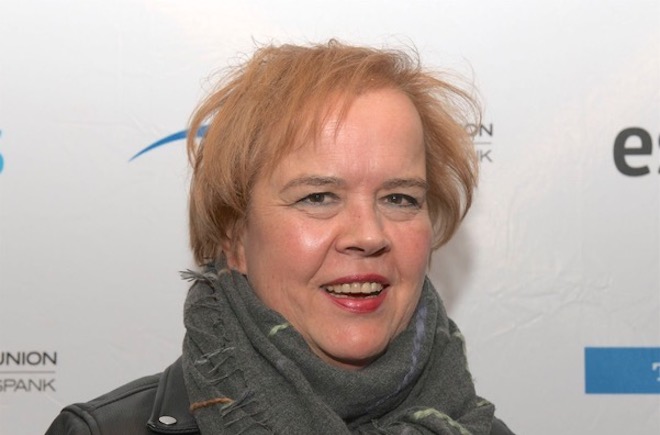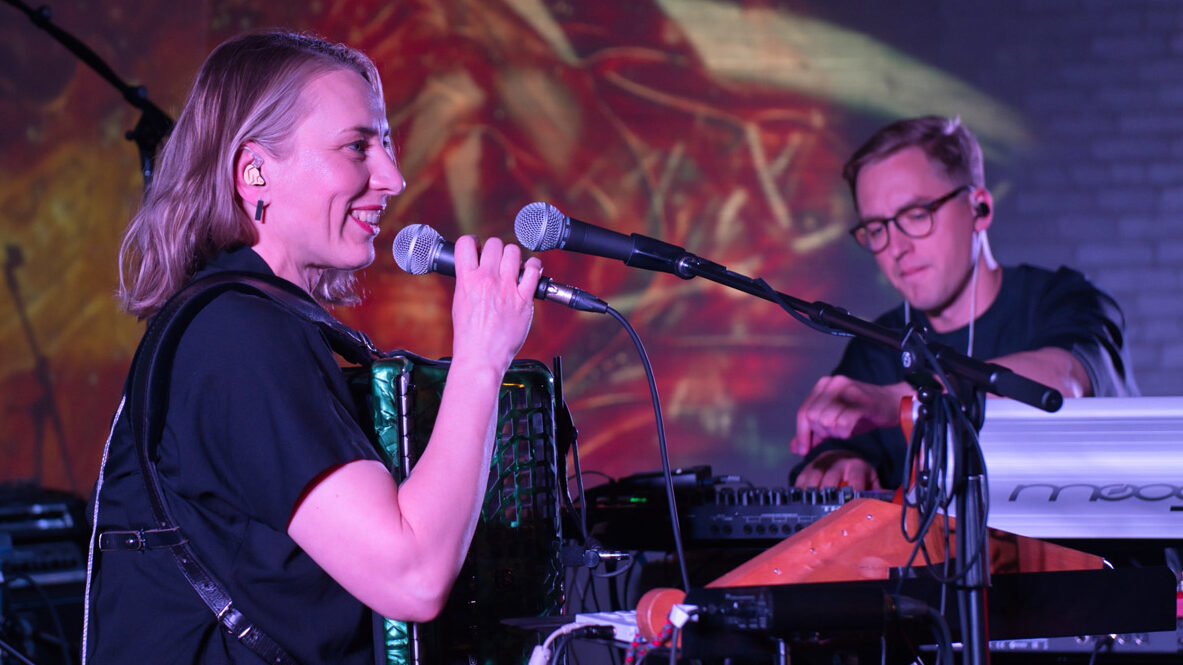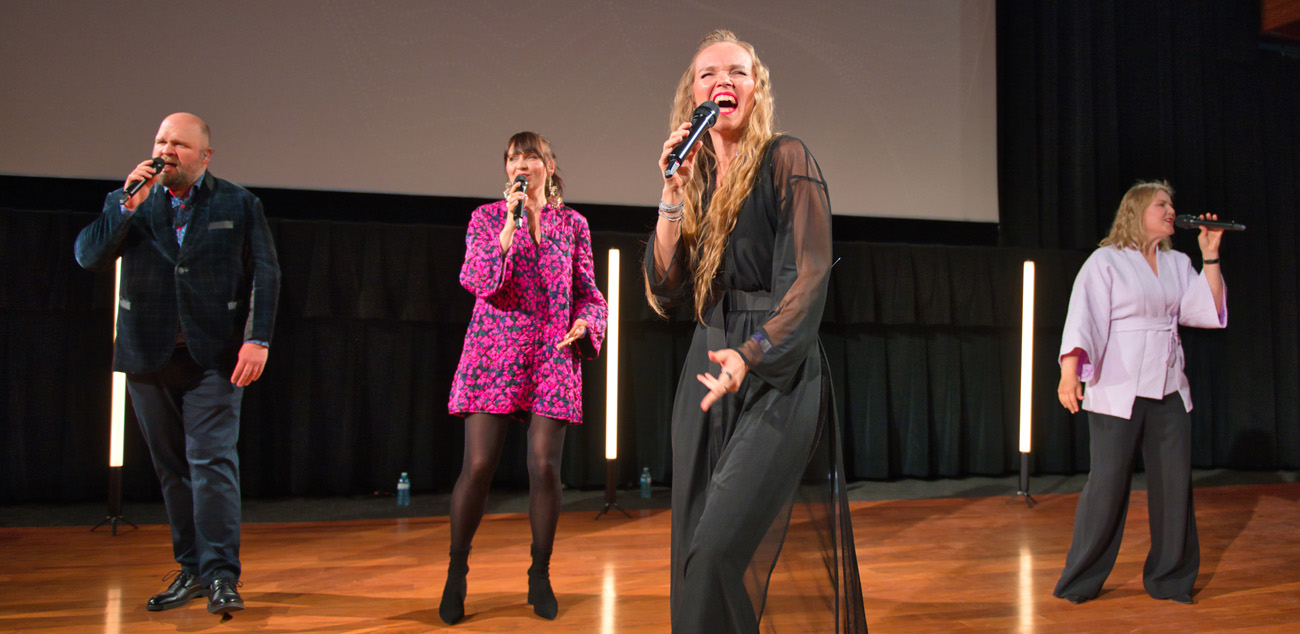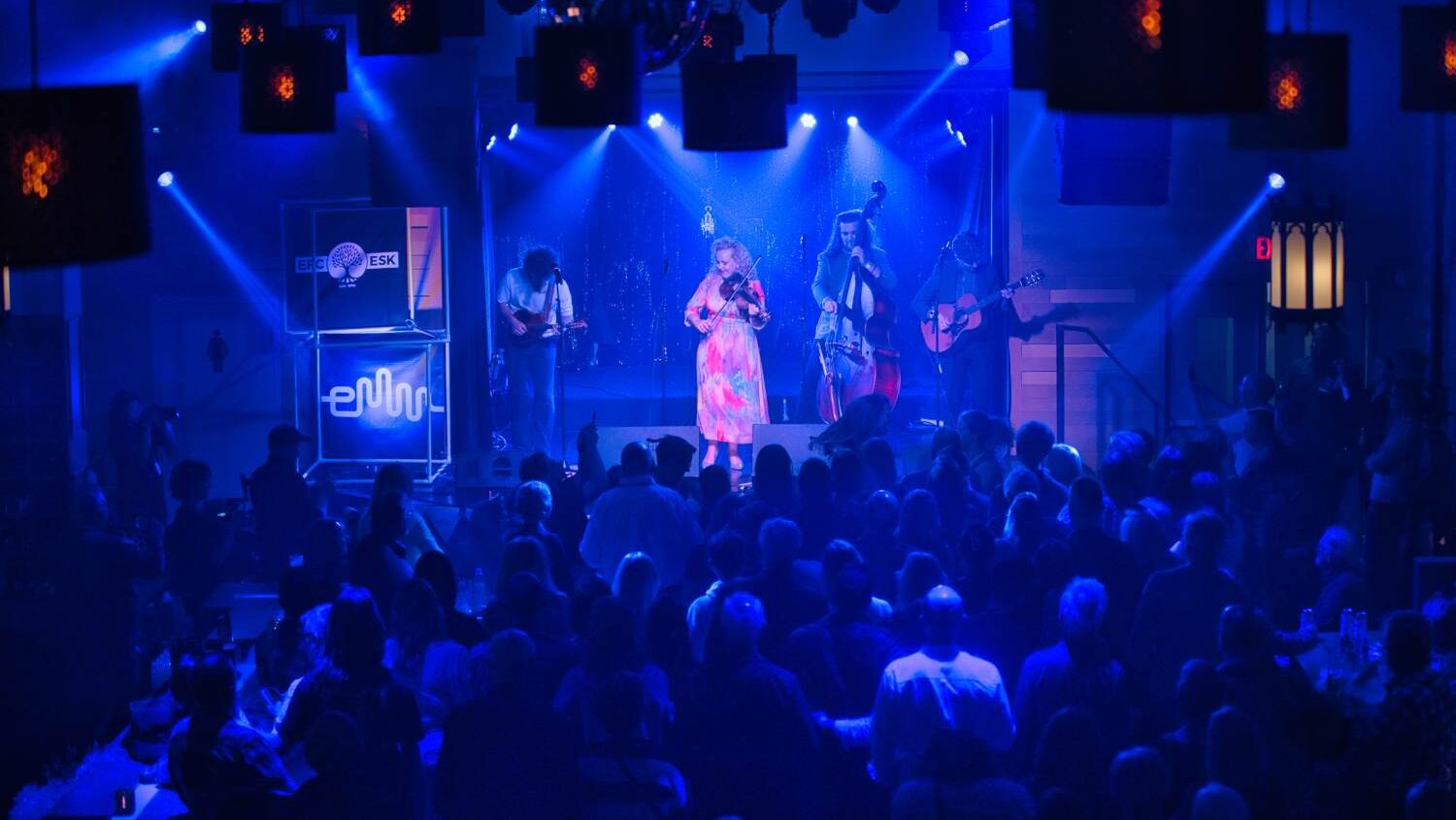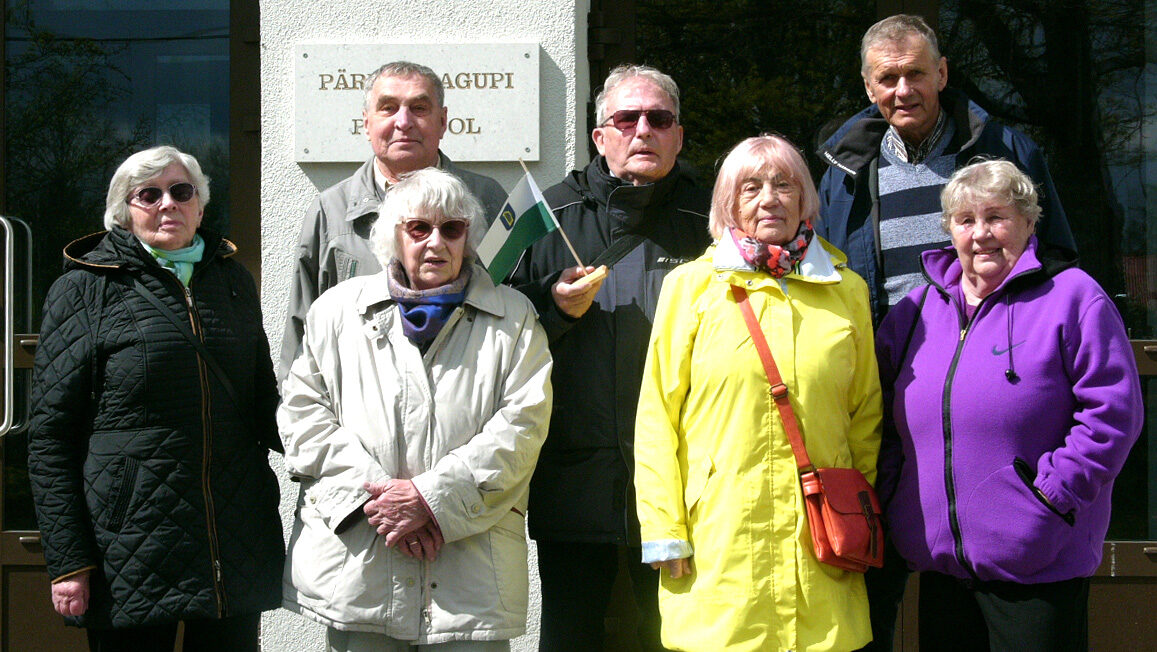Erik was at the festival to speak about his films “Ahto: Chasing a Dream” and “Shards of Light.” Both films were enthusiastically received, and “Ahto”, a story about sailor Ahto Valter, who navigated the seas and traveled around the world from 1930 – 1937 – won the jury’s choice award for best picture at EstDocs.
Erik and director Jaanis Valk, who also attended the festival, said it took nine years for the production team to painstakingly piece the story together, using archival 8 mm film footage shot by one of Ahto’s crew members. The glimpses of their adventures, which includes some memorable scenes from visiting traditional mud huts on the Cook Islands, is fascinating.
The central narrator in the film is Ahto’s son Ewan, who was with his father every mile of the journey, securely in place on board the yacht in a wooden playpen. Ewan lives in the U.S. Virgin Islands and had never seen much of the archival footage.
In his description of the film, Estonian media writer Tristan Priimagi states in the EstDocs program that “As an Estonian, Ahto goes completely against the grain, conversing with the Polynesians and Africans as equals when racism was still very much in vogue in Europe and sees himself as a native of his yacht, a citizen of a ship-state, governor of self.”
Perhaps we should all take a turn at circumventing the seas to promote a common understanding of different cultures. Could very well make the world a better place.
And we fell in love with the feisty spirit of stained glass artist Dolores Hoffman, who has created 36 magical masterpieces for sacred buildings in Estonia, Finland, Japan and Russia.
Dolores, who spent her early years in an orphanage, said she doesn’t think she is famous. She just has to create art, she can’t help it, it’s something she needs to do. Directed by Kullar Viimne, the production team shadowed Dolores as she continues to create her art well into her eightieth decade.
Another “blockbuster” film at EstDocs was “November,” well worth the price of admission for the cinematography alone. Shot in black and white by cinematographer Mart Taniel, this film is making the rounds in numerous other festivals to critical acclaim. The images from the film are powerful and remarkable at many levels, including how deftly they are lit.
Based on the Estonian novel “Rehepäpp” by Andrus Kivirähk, the film weaves together a mysterious and quirky blend of paganism, magic and black comedy in the feudal area in Estonia, when peasants lived under the rule of German landlords. Against this unusual backdrop runs a love story, which director Rainer Sarnet said he wove into the story to give audiences a satisfying though somewhat tragic story line to follow.
Estonians are among the least church-going people in the world, and celebrate their atheism, which can be traced back to times when the country was ruled by foreign powers and religious and other freedoms were quashed. However, many can be deeply spiritual, and beliefs are often tied strongly to the natural world. “Maausk” or “native faith” is part of Estonian’s unique religious landscape.
In “November”, we are taken into an ancient Estonian pagan village where the living commune with the dead, strange mechanical creatures called “kratts” are brought to life and werewolves make their rounds in the dark night.
When I speak with Rainer after the screening, it becomes apparent that there could have been a documentary made about filming the film. There were a number of animals in the film, including a real wolf who was carefully directed to bare its teeth at the appropriate moment, and a pig and its handler from Poland who shared the same hotel room.
“The Wind-Sculpted Land” by director Joosep Matjus brought another stunning series of images to life. Wildlife captured in exquisite detail, landscapes from every corner of the country and a sense of the harmony of the natural world was the deep content of this film.
Riho Västrik, the film’s producer, was on hand at EstDocs to provide some illumination into the three-year journey of making the film and why it has proven to be so hugely popular.
“The mosaic of the land in Estonia is unique,” he said. The country has forest, meadows, bogs, coastline, rivers and lakes, which makes for a rich natural world.”
“These landscapes define us,” he said. Indeed.
This was the last EstDocs for festival director Kristi Sau Doughty, who has been at the helm of this popular annual event for four years. She has so capably and imaginatively led the production of the festival, while introducing new ideas and events as well. A hit this year was bringing the culinary team from SALT restaurant in Tallinn to EstDocs to provide a delicious aspect to the festival and showcase their take Nordic cuisine.
SALT provided refreshments at the film’s receptions, two breakfast events and some special pop-up dinners in Hamilton.
EstDocs 2018 was feast for the soul and senses. The images from the films are playing like a slow and ever penetrating slide show in my memory. I think they will stay there for some time to come.
Karin Ivand, Toronto
